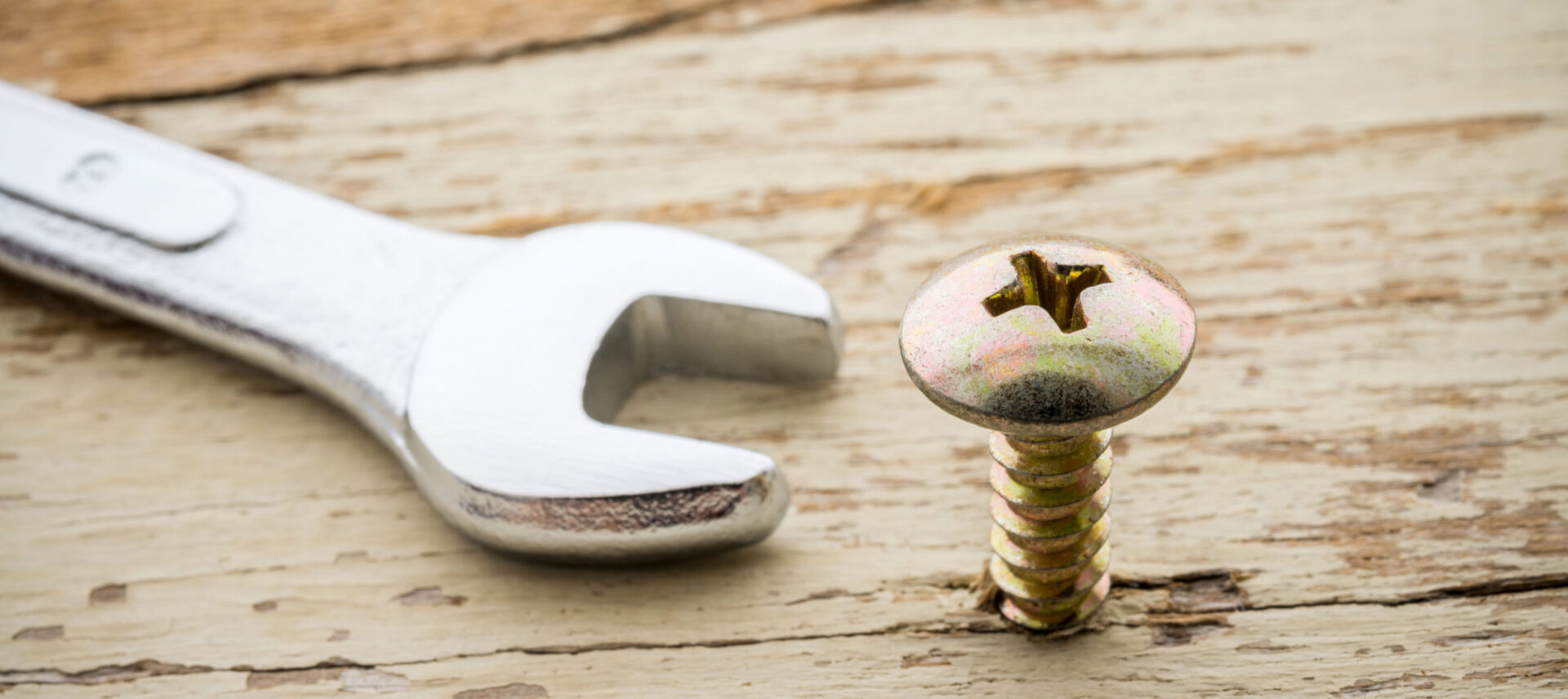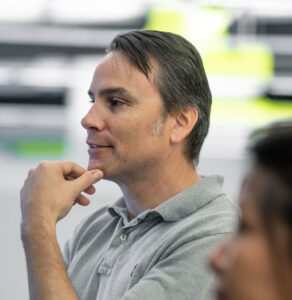
Article
The Right Tools Increase Design Certainty. How You Use Them Matters More.
Every designer has their preferred software, but it’s how you use these tools that leads to better design certainty. Learn what to ask your next design firm.
Every design firm has tools to help develop concepts, test user and manufacturing specifications, and increase the likelihood that a product design will be successful. But those individual tools only go so far. A Stradivarius violin still sounds screechy if a novice picks it up and tries to play it. But in the hands of a master? Even a cheap student-grade violin sounds beautiful.
In the same way, the most sophisticated design tools in the world won’t solve your problems by themselves. Engineers and designers have to be creative problem-solvers, regardless of whether they’re using a simple tool or a complex one.
Without the right tools, designers might make an easily avoidable design mistake that costs you down the road. They might even spend too much time and money over-engineering a part or product (which leads to its own set of issues). That’s why you need to engage a firm that knows how to use a variety of tools in creative and imaginative ways to quickly prove out their design choices.
Here’s a look at some of the tools we use early in the design process — before we’ve spent money on expensive prototypes. By using them in innovative, unconventional ways, we add certainty to designs, avoid costly prototypes and mistakes, and rely on data to arrive at a superior solution.
7 Tools to Solve Tricky Design Problems
Design uncertainty leads to risk, mistakes and product failures. All can be very costly to a client. Over the years, we’ve come up with some interesting and bespoke techniques to test and prove our designs, ranging from simple to complex. So as you shop for a design firm, seek out designers who go beyond the standard. Truly excellent designers will continually look for new, innovative ways to prove their designs.
Using the following roundup of tools we mitigate design risk by identifying and addressing problems that could turn into costly design changes later in the process. This helps us ensure we deliver the best product possible to our clients while saving on both time and money.
1. Excel Goal Seek
We use this simple but powerful tool in countless ways to help us get to the solution quickly and effectively. Most people know how to set up formulas in Excel to solve equations. But as designers, we sometimes know the answer or end result without knowing exactly how we got there. For example, perhaps we know that a part needs to bear a certain amount of weight. Or we might need to design linkages in a specific size. By using Excel Goal Seek, we enter the outcome first. Then we change all the related inputs and variables to achieve that desired output.
2. Python Script
Sometimes the tools we use to help us speed up the testing and analysis process come from unexpected sources. For example, one project required us to upload thousands of photo files into Excel to measure camera color saturation over a period of time. Doing this manually would have taken us more than a week. But one of our engineers realized she could speed up the process by writing a Python script. This script automatically opened each file, grabbed the details we needed to analyze, and uploaded them into Excel. Her out-of-the-box thinking drastically sped up the design process, saving the client both time and money.
3. Computer-Aided Design (CAD) Behavior Modeling and Multi-Objective Design Studies
This tool works similarly to Excel Goal Seek but makes it easy to generate 3D digital models based on the output we want to achieve. We love using this tool if we need to arrive at a “solution space” rather than one singular answer. For example, perhaps a design needs to operate within a particular range of motion. We can input the upper and lower limit of that range to factor in all the variables that will affect the output. The software runs through a whole barrage of “what if” scenarios and lets us see the ramifications of each and every design choice.
One way we used this tool was to design a fishing boat. The client didn’t want the boat to tilt past a certain angle no matter where a person stood in the boat. Behavior modeling allowed us to test all the variables that would cause a boat to tilt past that angle. We factored in things like the size of the hull and the weight of the person in the boat to see how far it tilted. By plugging these parameters into our CAD software, we honed in on exact design specifications before creating expensive prototypes.
4. MathCAD
MathCAD performs complicated engineering calculations and transforms the results into easily digestible graphs. This enables us to show clients our work without overwhelming them with detailed calculus equations.
We’ve relied on MathCAD to solve a number of interesting problems. One client needed to know that the ultraviolet LED lights they used to analyze samples wouldn’t degrade the plastic encasement in which they were stored. We used MathCAD to calculate how much power the LEDs emitted based on how frequently they were used and how long they were left on. In turn, this allowed us to verify that the total power output over the life of the product fell within the safety requirements for the plastic encasement. Using MathCAD was crucial in assuring the client their encasement wouldn’t wear down with prolonged use.
What’s more, the client’s third-party reviewer could also easily evaluate our inputs and outputs to verify we met the product’s safety specifications.
5. Excel Monte Carlo
This handy Excel tool shows us areas where parts might not work together and fix those issues early in the process. It does this by taking a normal distribution or bell curve and defining each minute variable within the distribution to test its impact on a design. We use this frequently to conduct tolerance analysis. Products are often made up of many parts that fit together. Each of those parts is manufactured according to precise specifications — but there is always the potential for one to turn out slightly smaller or bigger than another. As engineers, we have to determine exactly how much variation each part can withstand while still functioning properly.
Using Monte Carlo, we plug in the outer limits of each part’s tolerance level. The program then takes all the space between those limits and graphs the variability.
6. Motion Analysis
This tool is built into many CAD programs and shows how elements move around within a design. For example, if a product is actuated by a motor, the Motion Analysis tool makes it easy to answer questions like:
- How fast does it turn?
- How much torque does it need?
- Is it moving at the right speed?
- If there are multiple gears or linkages, how much do the forces change throughout the motion?
- How does each mechanism behave as a result of the motion applied to it?
- What do we need to strengthen or change as a result?
We turned to Motion Analysis when designing a biopsy needle containing multiple parts. Springs set several parts of the needle in motion, with each sequence depending on the one prior to it. The Motion Analysis tool showed that all the parts moved correctly within the 0.01 second timeframe.
7. Finite Element Analysis (FEA) with Master Modeling
Master modeling and top-down design enable us to reproduce elements of a master design onto every related part of a design rather than modeling each part individually. It also empowers us to make automatic changes throughout a design when we update the master model. This saves valuable time if specifications change partway through the design process.
We recently reached for this tool when one of our engineers wanted to test whether a linkage for a mechanism would be strong enough to open and close when folded down at extreme angles. Through master modeling, combined with finite element analysis and beam elements, we tested all possible angles quickly and easily. Most people might not use this tool this way, but we found it to be a simple and effective way to test a number of variations in a short amount of time.
Your Product Needs the Right Design Tools in the Right Hands
The product development process is inherently expensive and risky. There are never any guarantees your product will stand out among the competition and bring you the market success you expect. But good designers mitigate those risks and increase your product’s chance of profitability through vigorous testing and smart analysis techniques.
If you’re ready to learn more about the tools we use and the talented team of engineers and designers who use them, just reach out. We’d love to discuss your product idea and help you make it a reality.





